Biochef ARIZONA SOL User manual

ARIZONA
SOL
DEHYDRATOR
USER MANUAL
This manual is for the Arizona Sol 6 and 9 Tray Dehydrator

THE BIOCHEF STORY
Vitality 4 Life was founded over 20+ years ago, based on our belief in the incredible
healing power of living food, living juice, pure water, fresh air and sunshine.
Vitality 4 Life houses some of the very best healthy home products from leading
global brands and our selection criteria has always remained the same over the
years; the product must offer the customer superior value and quality, must deliver
genuine health benefits and must be made in a way that recognises the scarcity of
the planet's resources.
BioChef is Vitality 4 Life's very own range of healthy kitchen products, developed
and designed based on these same core values. BioChef is the entity of what we
believe in as a company at Vitality 4 Life, it is who we are. The BioChef brand is
very exciting for Vitality 4 Life, in that after so many years in the industry, working
with our customers and sourcing products, we now have a product range that we
regard as the finest in the world.
• Products that offer superior value in terms of quality and longevity
• Products that genuinely make our customers feel better from the inside, out
• Through long warranties and superior workmanship, minimise our impact on
the planet.
A Healthy Choice
The BioChef range is comprised mainly of food dehydrators, slow (cold press) juicers
and high performance blenders, a nut and seed oil press – products that constitute
what we call a "living food kitchen". These products are primarily designed to make
healthy eating uncomplicated and exciting, just as it should be. BioChef is about
sharing the power of raw foods and living juices with people all across the world.
Become part of the BioChef community today and begin to enjoy the benefits of a
healthier way of life.
LIVING • FOOD • KITCHEN
The information within this manual is intended to help you get the best results from
your BioChef Dehydrator. Please read this booklet carefully and don’t hesitate to contact
Vitality 4 Life if you have any questions.

Operation of 6 & 9 Tray Control Panel
The digital control allows for easy adjustment of the temperature inside the
dehydrator. In addition, the timer function will automatically turn off the
dehydrator when the selected time has elapsed.
Adjusting Temperature
1. Press the button to turn on the dehydrator.
2. Press the button for the display panel to light up. Then press or to
select the desired temperatures. The temperature range for this dehydrator is
35˚-70˚C.
3. At any time you can adjust the temperature by using the , and buttons.
You can stop the dehydrator at any time by pressing the button.
Setting Timer
1. Press the button, the display will flash, and then press the or buttons
until the desired time is displayed (30 minutes to 19 hours 30 minutes). To
change the time rapidly, hold down the or buttons.
2. The time in the display window will begin to countdown.
3. The dehydrator will automatically shut off after the set time has expired. If
dehydration is completed, remove food from dehydrator. If additional drying
time is needed, follow the preceding steps to continue dehydrating.
4. At any time, you can adjust the time by using the , and buttons. You
can stop the dehydrator at any time by pressing the ON/OFF button.
DISPLAY
TEMPTIMERINCREASE DECREASEON/OFF


History of Dehydration
Drying is a method of food preservation that works by removing water from the
food, which inhibits the growth of bacteria and has been practiced worldwide since
ancient times. The most astonishing fact about food preservation is that it permeated
every culture at nearly every moment in time. To survive, ancient man had to harness
nature. In frozen climates they froze meat on ice, and in tropical climates they dried
foods in the sun.
Evidence shows that Middle Eastern and Oriental cultures dried foods as early
as 12,000 B.C. in the hot sun. The earliest written record we know stated that the
Phoenicians and other fishing people of the Mediterranean used to dry their catches
in the open air. Sun drying tea leaves was very common among the early Chinese and
many other early cultures were also known to have consumed plenty of dried foods.
During the ages of exploration in the 15th and 16th centuries, most sailors on long sea
voyages ate varieties of dried food in order to stay alive. When Columbus discovered
the New World, dehydrated food played an important part in sustaining his crew and
in preventing any outbreak of nutritional diseases like scurvy and beriberi.
Leathery dried meat (or jerky) acted as staples for far roaming “mountain men” who
braved the Sierra Nevada Mountains and the unexplored Pacific Coast of America. By
1795, the French had developed the first dehydrator - a device designed to regulate
the drying conditions and to speed up the drying process.
Dehydrated food became popular during World War I. Due to America sending a
steady stream of supplies to Europe of which dried food made up a good portion.
Interest in drying food dropped off somewhat after the war, though it rekindled
during the Great Depression and World War II. After modern refrigeration and freezing
appliances became popular dehydration again dwindled as people no longer felt the
need to preserve their own food.
Today, because of the uncertainties with which we live, dehydrating is once again
becoming more and more popular as a method of preserving food. Dried food takes
up less space than frozen food, or canned food, no electricity is required to keep the
food, you don’t have to cook or thaw the food and you won’t have any leftovers that
could spoil. Dehydration offers a whole new and wonderful world of variety, healthy
snack options and tasty raw food.

Read ALL of these instructions thoroughly before using your dehydrator
1. Save these instructions for future reference;
2. Examine the carton and the unit for any damage that may have occurred
during shipping. Contact your point of sale to report any damage;
3. Never leave your dehydrator unattended;
4. Close supervision is required if the unit will be used around children;
5. Only for use indoors in a clean, dry location, free of flammable objects;
6. Do not move the dehydrator while in operation;
7. Continuous operation above 68°C is not recommended, as the external surface
will become very hot;
8. This unit may scratch household bench surfaces;
9. Do not use if the power cord or controls have been damaged in any way.
Contact Vitality 4 Life before attempting to make any repairs;
10. Do not use sharp utensils inside the unit;
11. Turn off the Dehydrator before plugging or unplugging from an electrical outlet;
12. Leave the Dehydrator unplugged when not in use;
13. Allow the dehydrator to cool completely before cleaning;
14. Never immerse the dehydrator or power cord in water or any other liquids;
15. Never plug the dehydrator into a damaged electrical outlet;
16. Do not allow the cord to contact the sharp edge of a counter, table or any hot
surface;
17. The use of attachments or accessories not provided with the dehydrator is not
recommended and will void the warranty.

How to set up your dehydrator
1. Remember to register your warranty with Vitality 4 Life, you can register by either
visiting our website and completing our online form or calling us directly;
2. Make sure the power switch is turned off. Place the dehydrator on a clean, dry
surface away from children and pets;
3. Plug into an undamaged electrical outlet;
Warning: Do not use an extension cord with your dehydrator.
4. Turn on the unit, please see “How to set the timer” for detailed instructions;
5. Heat the unit at 35°C for 45 minutes to remove any moisture;
6. If the unit stops for any reason, turn off, unplug and then repeat Steps 3 and 4. If
the unit continues to not operate normally, turn off, unplug and call Vitality 4 Life;
7. Follow your recipe to prepare the food that you wish to dehydrate;
8. Using oven mitts slide the dehydrator trays out of the unit and load the product to
be dehydrated onto the trays;
For best results: Do not overlap the product and be sure to leave space between
the items to allow for maximum air circulation.
9. Using both hands for maximum stability, gently slide the dehydrator trays back
into the unit;
10. Set the temperature by turning the knob on top of the unit. Monitor the internal
temperature and adjust as needed;
11. Moisture may collect on the surface of the food; this can be blotted off with a
paper towel;
12. Moisture may collect on the surface of the food. This should be blotted off this can
be blotted off with a paper towel.
Dehydrating Food
While most food types can be dehydrated at a temperature of approximately 55ºC,
when dehydrating meats, poultry and fish (making jerky, biltong etc) the temperature
needs to be raised to guard against pathogens such as Salmonella and E. Coli.
WARNING – It is recommended that meat and poultry are dehydrated at a
temperature of at least 68°C, or alternatively the meat should be preheated to at
least 68°C to guard against pathogens.
Fish should be steamed or baked to at least 93ºC until flaky before dehydrating at a
temperature of least 68°C.

Choosing Food to Dehydrate
• For best results only use highest quality foods.
• Produce in peak season has more flavour and more nutrients.
• Meats, fish and poultry should be lean and fresh.
• Do not use food with bruises and blemishes. Bad produce can spoil the entire batch.
• Remove as much fat as possible from meats prior to dehydrating. You can use a
paper towel under meat when dehydrating to absorb fat.
Tips for Pre-Treatment of Foods
With most types of cooking, preparation is important for the best results. Foods
that are prepared correctly prior to dehydration will taste better and have a better
appearance.
Cut, shred or dice the food uniformly. Slices should be between 6mm and 20mm
thick. Meats should not be thicker than 5mm.
To avoid browning of fruits soak cut fruit in lemon or pineapple juice for 2-3 minutes,
then place in the dehydrator. Alternatively soak in an ascorbic acid solution (made as
per manufacturers instruction) for 2-3 minutes, then place in the dehydrator.
Waxy fruits, (such as peaches, grapes, blueberries, etc.) should be dipped in boiling
water to remove the wax. This allows moisture to escape easily during dehydration.
Blanching can also be used to pre-treat foods for dehydration.
Preparation of Foods
For best results, select the freshest foods available to dehydrate. Note that immature
fruits and vegetables do not have as much colour and flavour as those that are fully
matured. Foods should be dehydrated as soon after purchase as possible. Foods high
in sugar such as apples, pears, peaches and bananas are prone to darkening due to
oxidation of the sugars.
Below are some pre-treatments that will help to reduce this effect:
Lemon and pineapple juice are natural antioxidants. Place the sliced produce in
fresh lemon or pineapple juice for a few minutes, remove, drain and place on the
dehydrator shelf. For extra flavour, try sprinkling on cinnamon or other spices.
Ascorbic acid mix, (a form of vitamin C) is available at most health food stores and is
can be used in tablet or powder form. Use about 2-3 tablespoons of powder or ground
tablets per litre of water; stir to completely dissolve the powder and place fruit into the
solution for 2-3 minutes. Remove, drain and place on the dehydrator shelf.

Blanching is used primarily to prepare fruits and vegetables for dehydrating that
have skins that will toughen during drying. This process helps lock in the colour and
flavour as well as soften the skin of grapes, cherries. prunes and plums. There are two
blanching methods: Water and Steam.
Water Blanching - Fill a large saucepan about half full of water. Bring the water to a
boil and use tongs to place food directly into the water, cover the saucepan and let
it simmer for approximately 3 minutes. Remove, drain and place on the dehydrator
shelf.
Steam Blanching - Using a steamer pot such as one used in Chinese cooking, put
5-8 centimetres of water in a saucepan and bring to a boil. Place the food into the
steamer basket, place over the saucepan and cover. Steam food for approximately 5
minutes, then remove and place on the dehydrator shell.
PLEASE NOTE:There are no exact rules that apply to food dehydration, as results can
be affected by room temperature, relative humidity and moisture levels in the food
that you are drying. To become proficient it will be necessary to experiment with your
drying techniques. If you use too much heat, food may harden on the outside while
being moist inside; however, with too little heat your drying times will be very long.
With a little practice you will be creating tasty, ready to eat snacks in no time.
Dehydrating Tips
• Do not overlap foods. Make sure foods are flat when placing on dehydrating trays.
Overlapped foods can greatly increase drying time.
• Make sure foods are completely dry before removing. If you are not sure, cut a
sample down the middle to check for internal dryness.
• Make sure to label containers when you store your dehydrated food.
• Proper storage helps maintain quality food. Package the food when cool. Foods can
be kept longer if stored in a cool, dark and dry place. The ideal storage temperature
is 16°C or lower.
• Vacuum sealing is a great way to keep dehydrated foods.
• Food will shrink approximately ¼ to ½ their original size and weight during
dehydration. Make sure not to cut pieces of food to be dehydrated too small.
Food Storage
Dried foods should be allowed to condition before being placed into a storage
container. Generally, let stand for approximately one week in a dry, well ventilated and
protected area. The conditioning time allows for further drying and removes most of
the remaining moisture.

Dried foods can be placed into clean, dry, insect resistant containers, preferably glass
jars. Heavy gauge plastic freezer bags can also be used. Remember to eliminate as
much air as possible before sealing the bag. When used properly, vacuum sealers
provide the ideal storage method. The less air present, the less potential for the
formation of mould.
Reconstitution
Dried foods do not need to be reconstituted for consumption. Many people prefer
to eat them in their dried state. If you want to reconstitute your food, here are some
basic guidelines:
• Soak food in unsalted water for 3-7 minutes and then prepare as usual. If you are
boiling them, use the same water they soaked in to preserve nutrients. If you plan
to soak foods for more than one hour, they should be placed in the refrigerator to
prevent bacterial growth.
• One cup of dried vegetables will reconstitute approximately two cups.
• One cup of dried fruit will reconstitute to about one and a half cups.
• Reconstitution times will vary depending on the thickness of the food and the water
temperature used.
• Warm water will speed up reconstitution but may result in some flavour loss.
Drying times
The following charts are guidelines for the preparation of various fruits, vegetables
and meats. Drying times will vary depending on the room temperature, relative
humidity and moisture levels in the food that you are drying. If the moisture level is
low, the drying time will be on the low end of the range. However, if the moisture
level is high, the drying time will be on the high end of the range.
Keep in mind that drying times are also affected by the amount of food placed on
the shelves. Overloading the shelves will slow the drying time and may produce
poorer results.
When dehydrating foods, it is important to check on the
dryness of the product. If the product is not
thoroughly dried, mould may form during
storage (see Food Storage). To test for
dryness, remove a piece of food from the
dehydrator and allow it to cool to room
temperature. Bend and tear the piece
to check for internal moisture.

Vegetables 50-55°C
FOOD PREPARATION TEST TIME (HRS)
Asparagus Wash and cut into 25mm pieces Crunchy 4-6
Beans,
Green or
waxed
Wash, remove ends and cut into 25mm
pieces or French style
Crunchy 9-12
Beetroot Remove 10mm of the top, scrub
thoroughly. Peel if preferred and cut into
5mm slices.
Pliable 9-12
Broccoli Wash and trim and cut into 1cm pieces.
Dry the florets whole.
Crunchy 10-14
Cabbage Wash and trim, cut into 3mm strips Crunchy 8-11
Carrots Wash and trim tops, peel or scrape if
desired. Cut into 3mm thick slices.
Pliable 7-11
Corn Cut kernels from cob and spread on the
mesh tray.
Crunchy 7-10
Cucumber Wash and trim, cut into 3mm slices Pliable 4-8
Eggplant Wash and peel, cut into 6mm slices Pliable 4-8
Mushroom Wash and cut into 8mm slices Pliable 4-7
Parsnips Scrub and steam blanch (if desired) and
cut into 8mm slices
Pliable /
Tough
7-11
Capsicum Wash and remove seeds and white
section. Cut into 6mm strips or rings
Pliable 4-8
Potatoes Use new potatoes, wash and peel if
desired. Steam blanch for 4-6 minutes.
Cut into French style or 6mm thick
circles.
Crunchy /
Pliable
7-13
Summer
Squash
Wash and cut into 6mm slices Pliable 10-14
Tomatoes Wash and slice into 6mm circles Pliable 10-14
Zucchini Wash and cut into 5mm slices Crunchy 7-11

Fruits 60-65°C
FOOD PREPARATION TEST TIME (HRS)
Apples Wash, core and peel if desired. Pliable 7-15
Apricots Was, halved and remove pit. Slice in half
and dry skin side down
Pliable 18-20
Bananas Peel and slice into 3mm slices Pliable 7-10
Figs Wash, cut out blemishes and quarter. Dry
skin side down.
Pliable 18-20
Kiwi Fruit Wash and slice into 6mm slices Pliable 8-11
Nectarines Wash, halve and remove pit. Slice if
desired and dry skin side down.
Pliable 8-17
Peaches Wash, halve and remove pit. Slice if
desired and dry skin side down.
Pliable 8-16
Pears Wash, core and peel if desired. Pliable 4-8
Pineapple Peel, remove fibrous parts and remove
core. Cut into 6mm slices or wedges.
Pliable 11-18
Rhubarb Wash and cut in 25mm lengths Pliable 6-10
Strawberries Wash, cut of tops and slice into 6mm
pieces
Crisp 7-15
Watermelon Cut off rind, cut into wedges and remove
seeds. Cut into 10mm pieces.
Pliable and
sticky
8-10
Meat and Fish 62-65°C
FOOD PREPARATION TEST TIME (HRS)
Jerky Use lean meat and remove as much fat as
possible as fat turns rancid with time. Cut
6mm thick slices and place on shelves.
Pliable 7-8

Troubleshooting
SYMPTOM PROBABLE CAUSE REMEDY
Dehydrator
does not
turn on
The wall power supply is
not on.
The dehydrator switch is
not on
Make sure power is in on
position
Press the power on button
Fan is working
but there is no
heat
Heater malfunction Turn the dehydrator off. Call
the service centre.
Heater is
working but
the fan is not
working
Check for any foreign object
lodged in the fan.
Turn the dehydrator off.
Check to see if there is any
foreign object. If still not
working, call the service
centre.
Not dehydrating
correctly
Too much food on the tray
Food is overlapping on the
tray
Reduce the food quantity
Evenly space food on the tray
Water drops on
the door
Too much food on the tray
Food contains too much
water
Reduce the food quantity
Reduce the food quantity
and increase dehydrating
time
Over heating or
little heating
Temperature control system
is not working properly
Turn the machine OFF and
contact the service centre.
Foods are
not evenly
dehydrated
The thickness of the food is
not even
Too much food on the tray
Evenly slice the food
Reduce the food on the tray
Abnormal
sound from
the fan
Screen cover in front of fan is
rubbing the fan blade
Turn off the machine and
unplug from power source.
Gently pull screen away from
fan blades by using needle
nose pliers.

Warranty Card
Congratulations on purchasing your
BioChef Arizona Sol Dehydrator from
Vitality 4 Life! This is your warranty card.
To activate your warranty, please register
online at
warranty.vitality4life.com
Vitality 4 Life warrant this BioChef Arizona
Sol Dehydrator to be free from defects
in materials and workmanship while in
normal domestic use for a period of 3 years.
DO NOT RETURN THE PRODUCT TO THE
STORE
Please follow these instructions to
receive faster service:
1. Note the product model and the serial
number.
2. Contact Vitality 4 Life.
3. If the product, or one of its parts,
qualifies for replacement or service
within the 30 day period after date of
purchase, Vitality 4 Life will arrange the
shipping at no cost to you. Vitality 4 Life
may ship the replacement or contact
you with further information regarding
repair of the product.
4. Typical turnaround times to address
warranty claims can be between 10-14
business days, plus shipping, depending
on location and type of damage or
warranty claim.
TERMS OF PRODUCT WARRANTY
COVERAGE
Vitality 4 Life provides the Product Warranty
coverage as further described below and
limited to the terms and conditions hereof:
1. If the BioChef Arizona Sol Dehydrator
exhibits a defect while in normal
domestic use, within the warranty
period; we will, at our option, either
repair or replace the Dehydrator or
defective part free of charge. The
product must be delivered by insured
mail, in proper packaging to your service
centre as indicated on the back of the
manual as a condition to any warranty
service obligation.
2. To activate your warranty, you can
register online within 30 days, or send all
the details by email to customerservice@
vitality4life.com
3. In the event that the warranty period for
a product has expired, or if a Product
does not qualify for warranty service,
repair or replacement, consumers may
still buy replacement parts or have
products repaired by one of Vitality 4
Life’s Service Centres. Please contact
Vitality 4 Life for further information.
4. Do not send the product back to
the service centre without return
authorization form.
5. In no event shall our liability exceed the
retail value of the product. We make no
warranty with respect to parts, from a
source other than Vitality 4 Life.
6. In the event that warranty parts or
products are provided, the customer
must cover the related shipping costs to
receive goods.
7. All exchanged or substitute parts and
products replaced under warranty
service will become the property of
Vitality 4 Life.Repaired or replaced
products or parts thereof will be
warranted by Vitality 4 Life for the
balance of the original warranty period.
Register online at warranty.vitality4life.com

8. Our goods come with guarantees that
cannot be excluded under the Australian
Consumer Law. You are entitled to
a replacement or refund for a major
failure and compensation for any other
reasonably foreseeable loss
or damage. You are also entitled to have
the goods repaired or replaced if
the goods fail to be of acceptable quality
and the failure does not amount to a
major failure.
WARRANTY DOES NOT COVER
1. Damage, accidental or otherwise, to the
Product, not caused by direct defect in
factory workmanship or materials.
2. Damage due to abuse, mishandling,
alteration, misuse, commercial service,
tampering, accident, failure to follow
care, operating and handling provisions
indicated in the instructions.
3. Damage caused by parts or service not
authorized or performed by Vitality 4
Life.
4. ‘Normal’ wear and tear through use
of the auger, drum, drum caps, sieve,
juicing screens or plunger.
5. Some states do not allow the
exclusion or limitation of incidental or
consequential damages. So the above
limitations may not apply to you in
the case of damage in shipment. If
your BioChef Arizona Dehydrator was
damaged in shipment: Immediately
report this type of damage to the parcel
carrier and have them file an inspection
report to contact the distributor from
whom you purchased the BioChef
Arizona Dehydrator for further
instructions.
6. You have rights and benefits under
the consumer laws in your jurisdiction.
Without detracting from these rights
or benefits, Vitality 4 Life excludes all
liability in respect of this product for
any other loss which is not reasonably
foreseeable from a failure of this
product, which may include liability
for negligence, loss of expenditure
associated with the product and loss of
enjoyment.
Please follow these instructions when
making a warranty claim:
1. You must inform Vitality 4 Life as soon as
the warranty claim arises and provide a
visual documentation of the fault.
2. Subject to the applicable consumer laws
in your jurisdiction, you must pay for all
packing, freight and insurance costs for
transit of the product to Vitality 4 Life.
IF THE WARRANTY CLAIM IS NOT
ACCEPTED:
a) Vitality 4 Life will inform the customer;
b) If requested to do so by the customer,
Vitality 4 Life will repair the product
provided the customer pays the usual
charges for such repair; and
c) If applicable the customer will be
responsible for all costs associated with
collection of the product from Vitality 4
Life.
In order to get the best use from your
BioChef Arizona Dehydrator, read and
follow the instructions in your operating
manual.

Find out more at:
vitality4life.com.au/biochef
biochef.com.au #vitality4life
vitality4life /biochef
@biochef
Vitality 4 Life – Head Office and Showroom
5/10 Brigantine Street,
Byron Bay, NSW 2481, Australia
International Phone: +612-66807444
Toll-Free (within Australia): 1800 802 924
Fax: +612-66807481
Email: [email protected]om
Website: www.vitality4life.com.au
Vitality 4 Life – United Kingdom Office
Unit 7 Vitas Vending Business Centre
Fengate, Peterborough, PE1 5XJ, United Kingdom
International Phone: +44 (0) 844 800 0831
Email: [email protected]o.uk
Website: www.vitality4life.co.uk
Vitality 4 Life – France
Email: [email protected]
Website: www.vitality4life.fr
Vitality 4 Life – Deutschland
Email: [email protected]
Website: www.vitality4life.de
Vitality 4 Life – Italiano
Email: ser[email protected]
Website: www.vitality4life.it
Vitality 4 Life – España
Email: atencioncliente@vitality4life.es
Website: www.vitality4life.es
Vitality 4 Life – Netherlands
Email: [email protected]o.nl
Website: www.vitality4life.co.nl
Table of contents
Other Biochef Kitchen Appliance manuals

Biochef
Biochef Vacuum Blending Accessory User manual

Biochef
Biochef Premium Commercial User manual

Biochef
Biochef Kalahari User manual
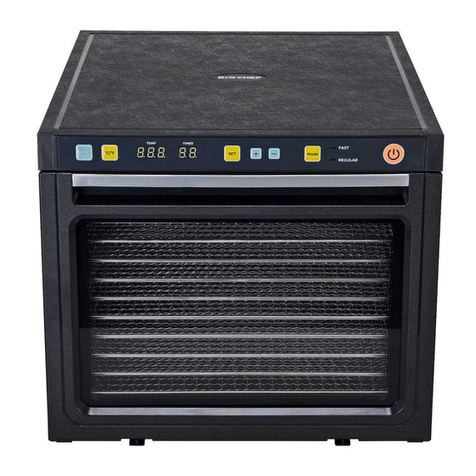
Biochef
Biochef SAVANA User manual
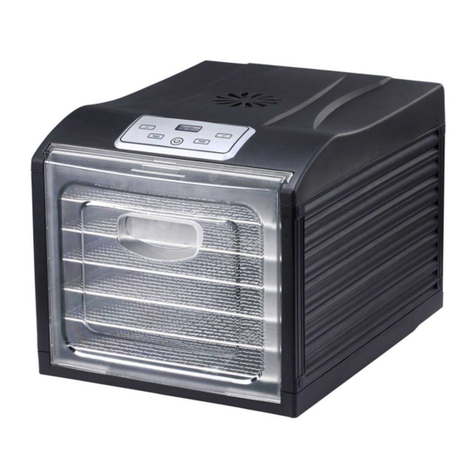
Biochef
Biochef Arizona Sol User manual
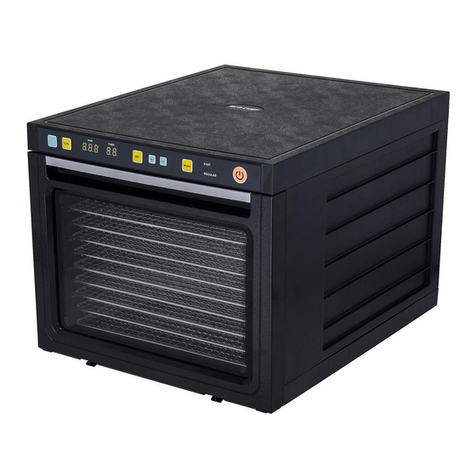
Biochef
Biochef Savana User manual
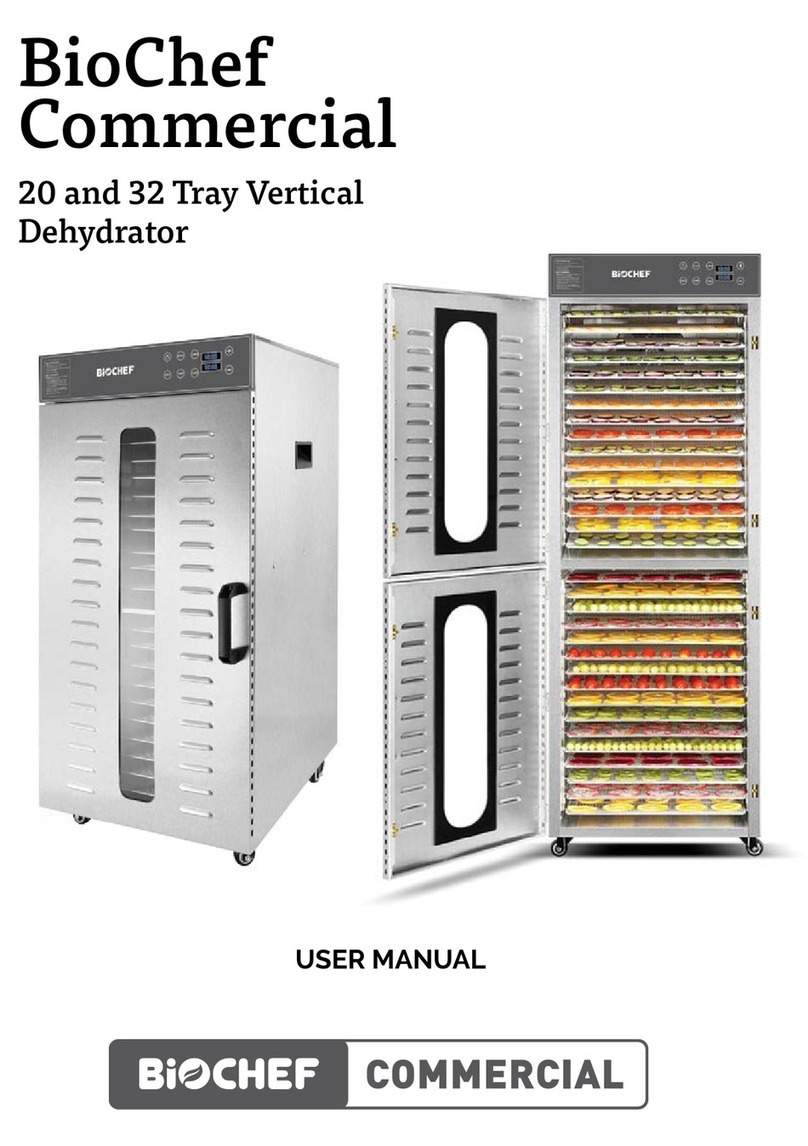
Biochef
Biochef Commercial 20 User manual
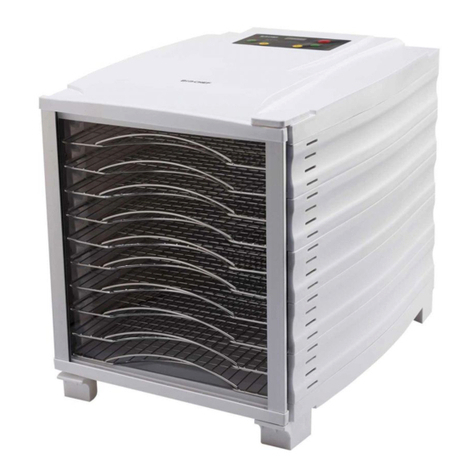
Biochef
Biochef Arizona User manual

















